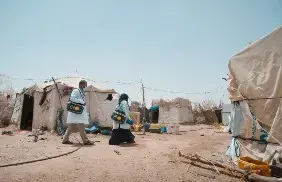After nine years of conflict, Yemen remains one of the world’s largest humanitarian crises. Over half of the country's population, 18.2 million people, require some form of humanitarian assistance in 2024. They are faced with the brunt of conflict and displacement, protection concerns, climate change, and economic deterioration.
Over the course of the conflict, Yemen’s economy has continued to deteriorate and its GDP has shrunk by more than half. A recent analysis by the World Bank found that the GDP contracted even further in the last year. This has left a vast majority of Yemenis living in extreme poverty, grappling with food insecurity, and facing dire challenges in accessing basic education and healthcare.
The already sky-high food prices have become even further out of reach for millions of people. This is particularly alarming for an estimated 2.7 million pregnant and breastfeeding women are projected to require treatment for acute malnutrition. Only one out of five functioning facilities offers maternal and child health services, highlighting the urgent need for increased healthcare capacity.
An uptick in violence and severe weather events has displaced over 75,600 individuals since the beginning of 2024. The UNFPA-led UN Rapid Response Mechanism in collaboration with UNICEF and WFP and local partners, delivered emergency relief to 96 per cent of displaced individuals across 18 affected governorates; 22 per cent of those assisted were female-headed households, 8 per cent were persons with disabilities.
In 2024, UNFPA aims to raise US$70 million to maintain its critical support for women and girls. UNFPA’s appeal is currently funded at 61 per cent.
Since the beginning of the year, UNFPA's response has reached over 911,000 individuals with life-saving reproductive healthcare, protection information and services and emergency relief, with support to 127 health facilities, 37 safe spaces, nine shelters and seven specialized mental health centres.


